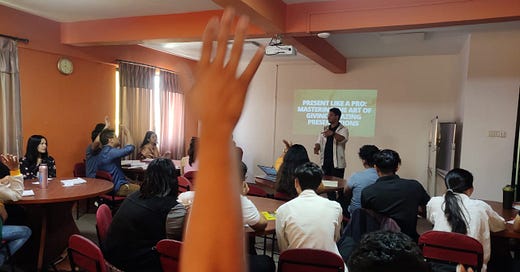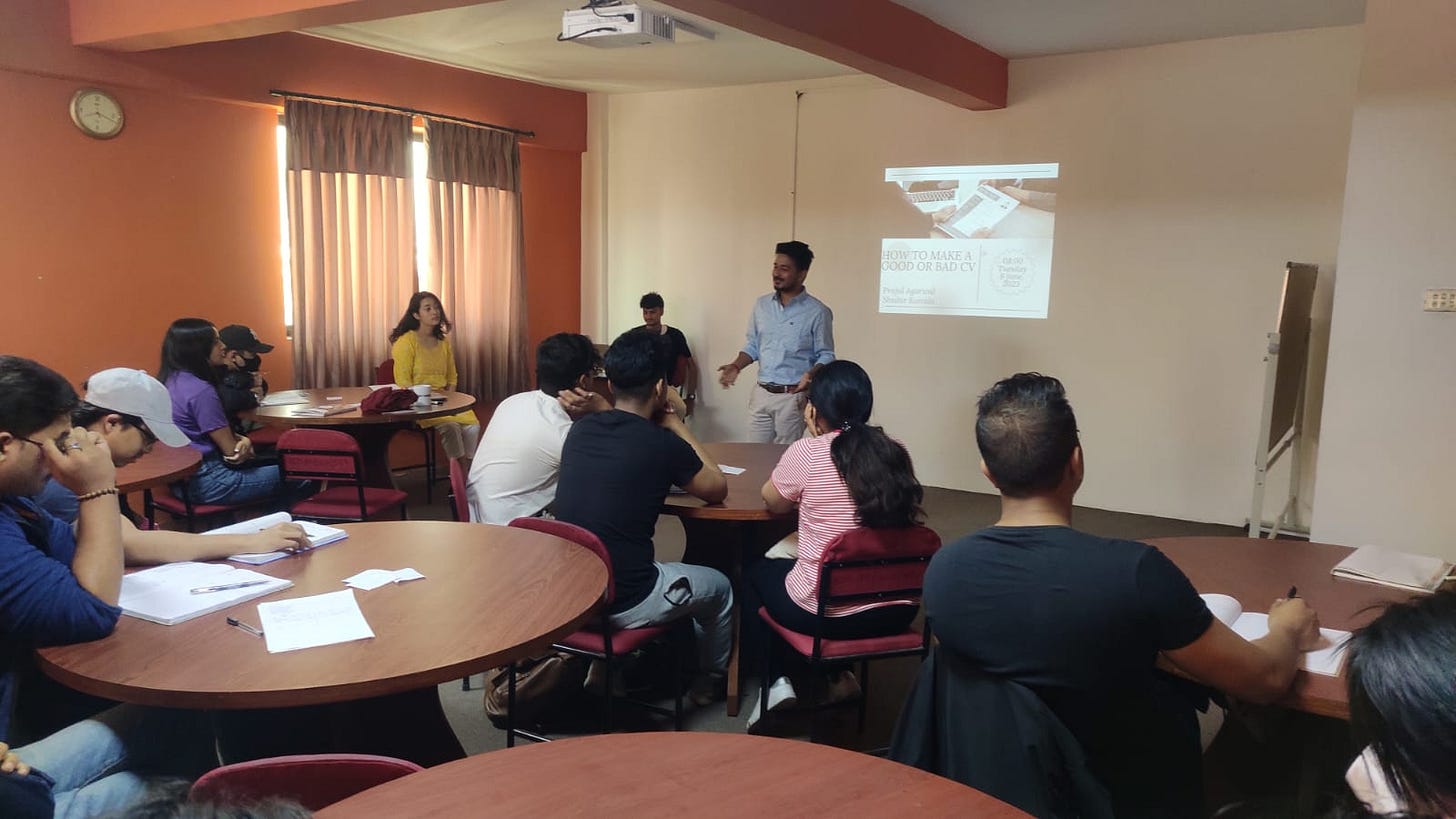Classroom Management is the Last Thing...
... I want to worry about. That's why I intentionally plan it in the initial days.
A REAL problem all teachers face:
One of the most common challenges almost every teacher faces almost every day is classroom management and handling student misbehavior. In the almost 8 years of working with other teachers as a teacher developer, I’ve heard this from teachers again and again.
Regardless of the grade level they teach at.
It is exhausting, not being able to do the teaching job, but being forced to do the chores.
It is frustrating, not being able to conduct the classes according to the lesson plan, but being forced to spend valuable time on ‘lecturing’ the students on how to behave.
It is insane, not being able to take better pedagogical decisions, but being forced to deal with criticism from observers, admins, journalists, and parents.
Most teachers quit or change roles because of this. They might have other issues related to salary, benefits, or the work culture. But it’s also about not being able to manage the classroom, handle student misbehavior, and be accountable for their learning.
So what can teachers do about classroom management?
My goal as a teacher is to be able to teach meaningfully and happily without having to worry about peripheral stuffs. And, to prevent any frustrations and headaches that rob the essence and joy out of teaching. Not minimize, but completely prevent them.
So, here’s my personal take on it.
(I’m sharing these because they work for me. And this is not a prescription. However, if you want to try or tweak around, I can promise you that it will surely work for you too, because it’s all about the fundamentals done right.)
First, the Big Picture: Automation
Not being able to manage the class and control1 student behavior takes up a lot of mental space and add unnecessary cognitive load in a teacher’s head. This can quickly become a lot of hassle. And will definitely lead to frustration.
Therefore, I want to "automate" the logistics part (the non-teaching process) as much as possible. That way, I can free up my mental/emotional space for the creative and productive things I want to do in the class.
So, plan to automate everything you can automate.
Now, in details:
I start this all by meticulously planning and then building the blocks of the positive learning culture right from the start.
I focus on, what I would like to call, the BIG R and work on the three SMALL R.
The BIG R = Relationship
The three SMALL Rs = Rules + Routines + Rituals
And then work strategically to makes these as automatic behaviors as possible, as a set of unconscious habits2.
And like any habit, the first few classes can be challenging because I will have to defeat the inertia. But when I slowly build the habit and pick up the momentum, classroom management and handling student behavior becomes smoother, easier, and automatic.
Now let me break these down even further.
The BIG R: Relationship
A positive relationship between the teacher and the students is the glue in the learning process.
I’m not totally convinced on the idea that students must “like” the teachers otherwise they don’t learn (or want to learn). Sometimes, I am okay with students not liking me.
Therefore I focus on three elements of a productive relationship:
- Establish my Credibility & Confidence in teaching the content/subject
- Demonstrate Consistency in my actions
- Express Care, that I deeply deeply deeply care about their learning
I make sure I get these three elements of trust and relationship get done before and during the first class. If they like me, that’s just a bonus.
Also, caring about the students is not necessarily the same as being ‘nice’. You might be a nice teacher but false promises will only erode trust over times. Like telling the students that their learning experience will be fun and easy, or that they will be get 100% in their essays if they just meet the deadlines.
The three SMALL Rs: Rules, Routines, Rituals
1. RULES:
I have a few simple rules - the non-negotiables. And, NO. I do not co-create these rules with the students.
(And before you scream “blasphemy”, here’s my context. I teach undergrad and grad students. 30 to 35 young adults in average. The class duration is 2 hours per day. Whenever I have tried to co-create rules with them, the rules they come up with are - to start the class 10 mins late, give longer break, and extend assignment deadlines. First, those are not rules. Second, the students never come to a consensus.)
Here are my simple rules for a grad class:
6.30 means 6.30 (meaning the class always starts at 6.30)
Make your phones invisible
Come to the class prepared (like, prior readings, presentations)
Prior notice via Email (Text msg or Phone calls only for emergency situations)
(There are a few more rules related to academics and university, which the students can find in their course syllabus. Rules regarding assignment submission, grading, plagiarism, being absent, etc.)
What do I do when the students break the rules?
I always give a benefit of doubt for the first offense :)
I state the rule, frame my expectation in a positive way, stress on the part about responsibilities and consequences.
“Hey man, we always start the class at 6.30 and I expect every student to be already inside the class. Of course you can come in and take the class. But you know it well when you are late, I will have to mark you “L” in the attendance sheet.”
2. ROUTINES:
Routine is a sequence of actions or structures that I “almost” always follow. For instance, every class starts with a “Retrieval Practice or Quiz” and ends with a “Reflection”. Likewise, in every class, a pair of students will have to give a 20 presentation on a pre-selected topic. There are pre and post-presentation activities related to the topic.
A 10 min break is also a part of the routine.
3. RITUALS:
For my class, rituals means the “means of participation”. For instance, when I ask students a question, the slide has the instruction - “Write. Raise. Share”.
Initially, students will have doubts and queries about the purpose of the rituals. Therefore, it’s important to talk about them in the first class (and remind them in future classes too.)
I follow a simple process of What - Why - How.
What is the ritual’s name?
Why the ritual is necessary or important?
How do we do it?
“Let’s learn about this ritual. It’s called 5.4.3.2.1. Whenever I want your full attention or want you to pause or stop your individual or group work, I will shout out 5.4.3.2.1, giving you all around 5 seconds to give me your full attention. I want total silence. I don’t want to repeat the instruction at all. So here’s how we do it. (Raising my right hand and counting down with fingers) 5..4..3..2..1. Thank you.”
The first two weeks are the toughest to implement and habituate this system. There will be a few mis-steps and false starts too. Like, some students will forget the “Write. Raise. Share” ritual and will just blurt out the answer. That’s okay. I use that moment to remind and reinforce everyone about the ritual.
To Conclude
Like I mentioned above, classroom management and handling student misbehavior in the classroom can squeeze out a lot of time and energy. By building a positive learning culture which focuses on relationship (trust and credibility), rules, routines and rituals, teachers can save a lot of time/energy and invest their time on making their teaching more productive.
Hope you can find the sweet spot of being a “firm, fair, and friendly” teacher.
The term “Control” looks like autocracy for a lot of people/teachers. But it’s has nothing to do with morality. Control is about responsibility and consequence.
I would recommend reading the book Atomic Habit by James Clear.







Thanks for the structured breakdown. That's helpful!
Also, I'm not sure if this would fall under classroom management, but how do you deal with a non-interactive class where students don't misbehave but don't respond either?